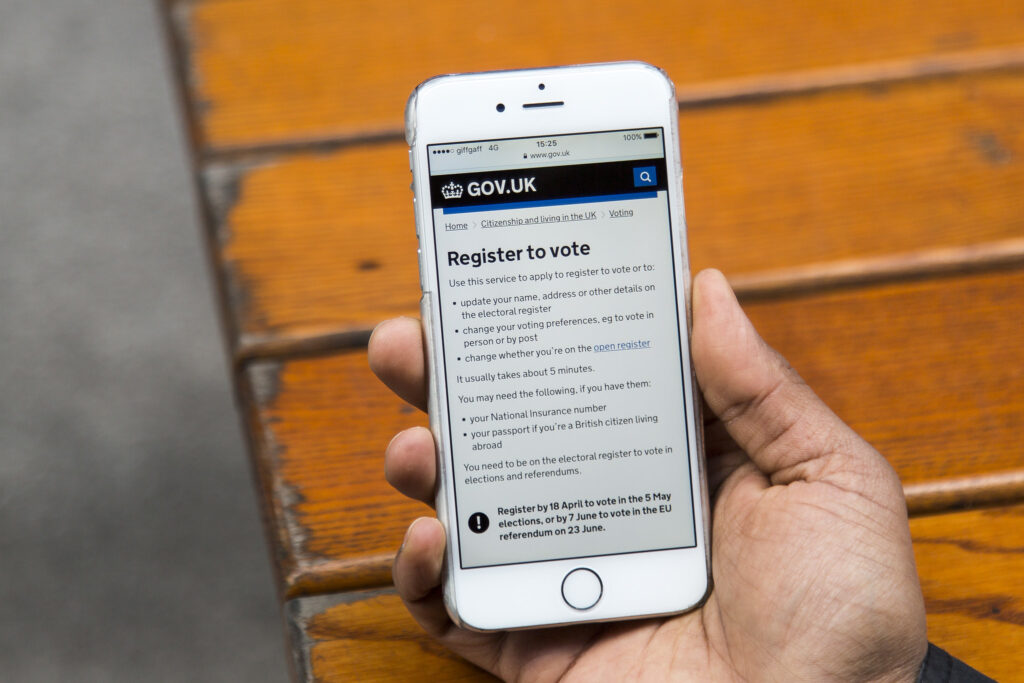
The GOV.UK Register to Vote service was launched in 2014 and was one of the first government digital exemplar services. Since launch, the service has processed over 37 million online applications.
As a live service, it has developed gradually since launch but we recently undertook more substantial changes to modernise the service.
A reliable architecture
The Register to Vote service plays a pivotal role in the UK’s democratic process, providing the means for electors to easily get registered so they can participate on polling day. It's therefore essential that it's available to the public whenever they need it, and especially in the run up to an election. Reliable, trusted infrastructure for electoral registration is essential to ensure the public are confident in democratic processes from the start.
The Register to Vote service poses particular challenges as it experiences some very large spikes in activity leading up to registration deadlines or in response to social media campaigns. We typically receive around 10,000 to 40,000 applications a day during off-peak periods. This can ramp up in the days leading to an election with over 600,000 applications submitted on the registration deadline for the 2019 General Election. There are only a handful of government services that demonstrate this kind of variability.
The service must remain available and performant during these spikes in order to maintain public trust. To achieve this, we rebuilt the service on a Function-as-a-Service (FaaS) platform. This approach allows modular pieces of code to execute in response to an event, such as a user clicking the ‘submit’ button.
Use of managed technology such as FaaS allows teams to develop services without having to worry about building the underlying server infrastructure that runs the code, instead leaving that to the hosting provider.
Because FaaS technology manages the infrastructure of each function independently, it's able to scale incredibly quickly in response to increased traffic with no impact on the rest of the service infrastructure. This is particularly helpful for Register to Vote which can experience sudden spikes in traffic without warning and means that the 10th and 100,000th user can both use the service with the same experience.
Further improvements
We used the opportunity to make a number of further improvements to the system to provide benefits to users and government beyond the initial project scope.
To make the most of the new Public Sector Geospatial Agreement, we linked up with Ordnance Survey’s addressing API, OS Places. This means that addressing changes are reflected more quickly and accurately on the service, and reduces costs and administrative overheads for the system.
To ensure the utmost security of the system, we conducted threat assessment workshops, consulted with information assurance and cyber security experts from NCSC and GDS throughout the design and development phases. We also implemented new comprehensive operational cyber security processes for the new live system, which increase protections, alerting and visibility around any malicious attempts at disrupting the service or accessing sensitive data.
To improve user experience, we updated the design for the service to utilise the latest GOV.UK Design System components, styles and patterns and updated content on several pages to provide clearer information to users. We conducted multiple rounds of user research across all user journeys to ensure the service continued to meet user needs.
To improve the accessibility of the service, we committed ourselves to going above and beyond the legal minimum as defined in the Public Sector Bodies Accessibility Regulations. The new service now, as far as possible, meets the highest (triple A) standard of accessibility noted in the Web Content Accessibility Guidelines. This is detailed in our accessibility statement. We’ll keep this up to date as we move forward.
Launch
The refreshed service was launched in May 2020 with very little fanfare. The goal was to make the transition technically seamless as we moved from private to public cloud. We also aimed to minimise any downtime, making the go-live process relatively unnoticeable from the public perspective.
The migration will also allow us to realise operational benefits and a reduction in running costs. Use of FaaS and managed services means that we now only need to pay for what is actually used, no matter how ‘spikey’ our traffic patterns are. Post launch, our projected annual hosting costs are 55% lower.
What’s next?
The new Register to Vote infrastructure has provided a robust and resilient platform for future development to the service. We can now start to consider other changes to improve the design of Register to Vote, changes which would have been more costly and complex to implement before the new infrastructure.
We are already working on a number of further improvements to the service, which we are looking forward to sharing soon.
We’d also like to thank our numerous colleagues who contributed to this project, from those in GDS to our contracted suppliers at Softwire Technology Ltd. We couldn’t have done this without you.
Register to Vote now.
